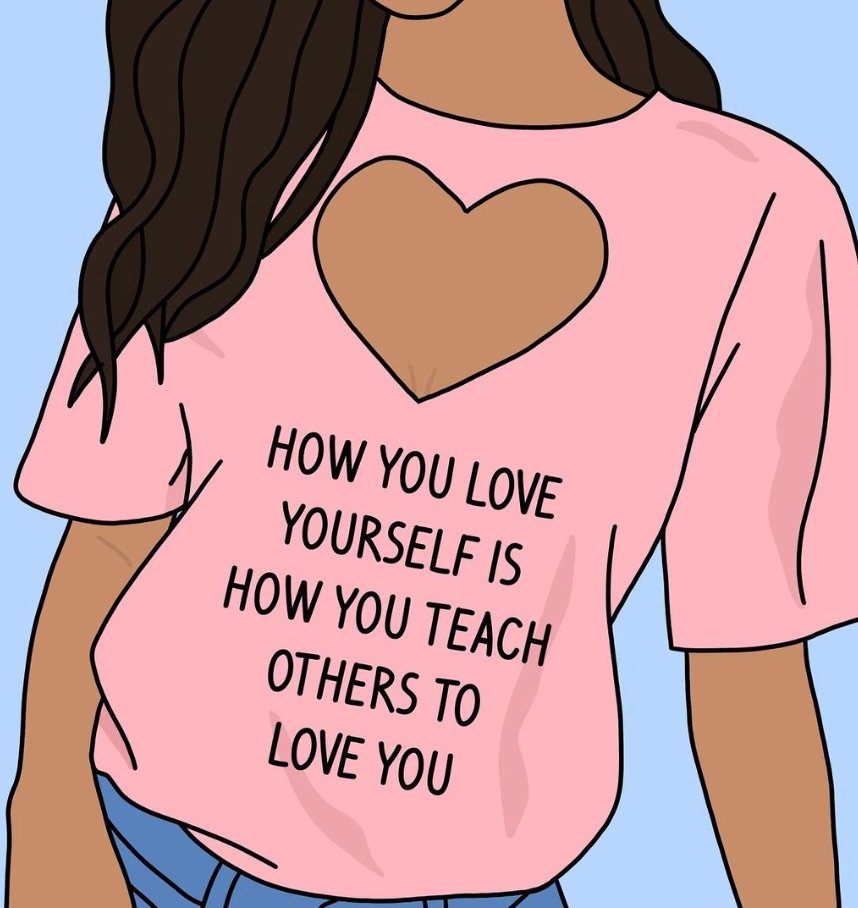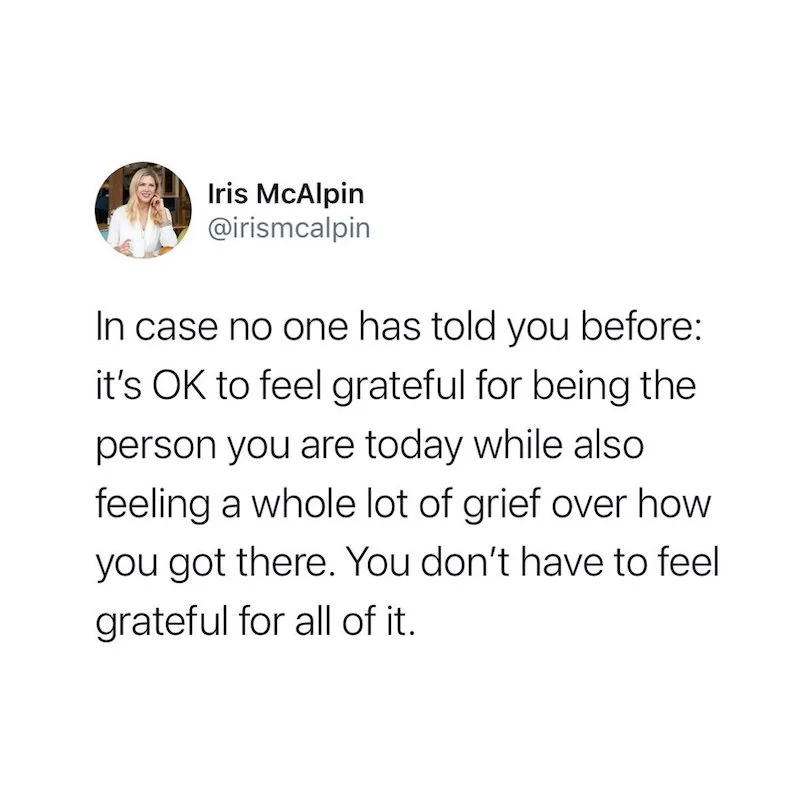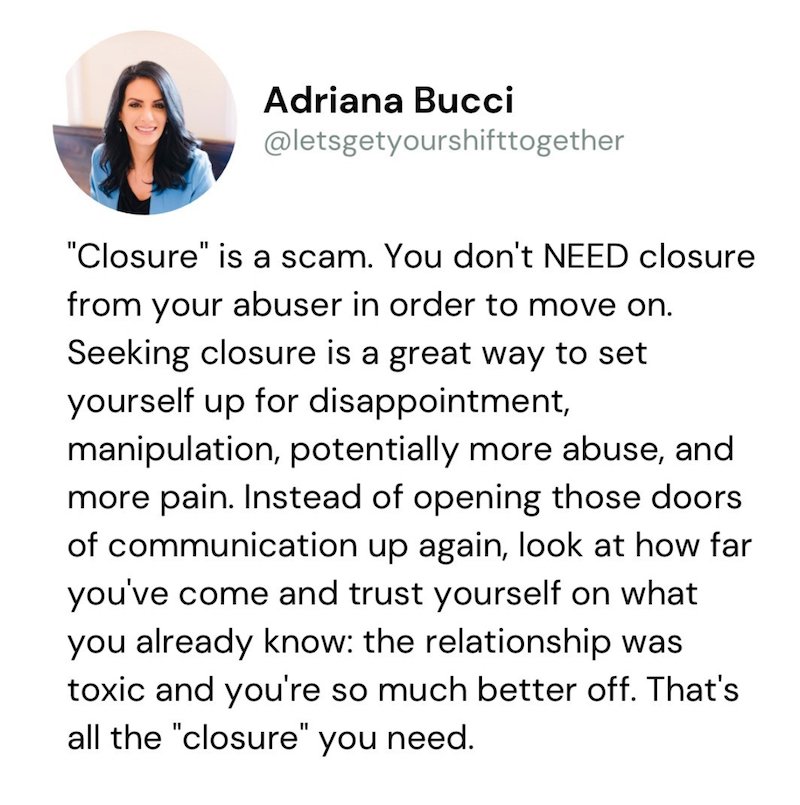7 Crucial Things No One Tells You About Recovering From Narcissistic Abuse
by Marissa Pomerance
For survivors of narcissistic abuse, identifying and escaping the abuse is only a first step.
What comes next is even less clear. How do we heal?
How do we begin to have healthy, productive, trusting relationships again? With others, and with ourselves?
To find out, we spoke to two of the most prominent experts on narcissistic abuse, Clinical Psychologist Dr. Ramani Durvasula and Associate Marriage and Family Therapist Tanya Gaum.
Here are the 7 most important things to know about narcissistic abuse recovery.
1. There are no “steps.”
This isn’t like addiction recovery. There is no neatly prescribed path. No clear-cut 12 steps to follow. Just like grieving doesn’t always fall into those famous 7 stages, recovering from narcissistic abuse isn’t always done in a distinct order. Recovery might not even be linear—in fact, it might be very messy.
And while this may seem obvious, for survivors who struggle with self-blame and devaluation, “it is critically important to not get too caught up in viewing recovery as ‘steps’—steps imply a right and simple way to approach a very nuanced and complex issue. This is a process that could take months or years. And if survivors believe they are not healing ‘on a schedule,’ there is a risk of self-blame for not getting better ‘fast enough,’” says Dr. Ramani.
2. Social media platitudes do more harm than good.
Though we’re grateful that narcissistic abuse has gained a lot of attention in the psychological zeitgeist, we’ve also seen countless posts circulating on Instagram that say things like:
“You can’t love others until you learn to love yourself.” Or, things like:
We call bullshit.
Because while these platitudes often seem harmless, and while social media has provided many survivors with platforms to connect and engage and share stories and educate others, buying into vague social media narratives can undermine the recovery process.
“There is an overwhelming wave of unfortunate pop-culture misinformation spreading through social media that conceptualizes survivors of narcissistic abuse as people who attract and are attracted to narcissists because they have a deficit of some sort, be it self-love, self-confidence, or self-awareness. And that only by recognizing and healing these deficits, will they be able to attract ‘real love,’” explains Gaum.
These misconceptions are dangerous and can quickly veer into victim-blaming, which “sells a message to survivors that they are essentially ‘unlovable’ until they ‘manifest’ some mythical state of existence—absent of all normative insecurities, vulnerabilities, and blind spots,” Gaum argues.
So instead of just turning to social media, Dr. Ramani and Gaum recommend turning to experts who are thoroughly trained in narcissistic abuse. We’ll get to that in a bit.
3. We have to learn to trust ourselves again.
Abuse didn’t just happen when the narcissist yelled or screamed or raged at us—it also happened when they gaslit and invalidated and told us we were “crazy” and said that we were the “real” narcissist. “The experience of being gaslighted on the regular for a significant period of time causes the gaslightee to lose trust in their own sense of reality in terms of their self-perception and their interpretation of events,” says Gaum.
Being constantly told that we’re “crazy,” or “imagining things” makes us question our reality, making it hard to trust ourselves.
For recovery to take place, we have to find ways to trust ourselves again. Once we do, we can start to put down the pervasive self-blame that tells us this abuse was our fault, or that we imagined it. “Once survivors understand the ways in which they’ve been manipulated by the narcissist, they can begin to use their cognitive resources for healing and designing their own lives,” says Gaum.
Image from @irismcalpin/Instagram
Yes—easier said than done. Trusting ourselves means disentangling our identities from the long-term effects of gaslighting and manipulation. It means building back up our self-esteem, and not allowing it to depend on the feelings of others. Believing ourselves, our intuition, and in our own realities.
But once we can start to trust ourselves again…
4. We may discover our truest, most authentic selves.
There can be a powerful silver lining after going through this hideous ordeal: a newly discovered authenticity.
According to Gaum, the one thing she wishes every survivor knew is that “the process of healing from narcissistic abuse tends to unleash a raw and courageous authenticity.” Because recovering from narcissistic abuse allows us to “dismantle narratives and replace them with authentic ones,” Dr. Ramani explains.
So as we divorce ourselves from the notion that we’re not good enough—that we were never good enough—we start to realize the things the narcissist said about us weren’t true. We learn that our experiences and feelings are valid. We learn about our needs and boundaries. We realize that our sensitivities don’t make us weak. All of that helps rebuild our self-esteem, our sense of selves, our identities. Which, for even the most functional, healthy adults, is a process that can take years.
So even after suffering through terrible abuse, we now have this: a more whole, intact sense of self, and a new sense of autonomy. And, as Dr. Ramani says, “survivors actually have the opportunity to do the important inner work that will pay dividends for a lifetime.”
5. We might lose people, but we’ll also create newer, healthier relationships.
Some people can’t understand, or won’t want to understand, our trauma.
Telling our friends that our ex-partner was abusive might mean forcing them to “pick sides” in the break-up. Telling our family that our parent’s narcissism damaged us irreparably as a child might alienate us from the rest of the family, because we’re bringing an ugly truth to the surface that they’re not prepared to deal with.
So while recovery enables survivors to better express needs and boundaries, it can also cause us to lose relationships along the way. “When survivors of narcissistic abuse ‘come out’ about their experiences, they are often met with disbelief, invalidations, minimizations, gaslighting, and blame, even from people who they love and believed they could trust,” says Gaum. “Survivors’ stories of abuse are often met with statements like, ‘but I’ve never seen them behave that way,’ or ‘well, there are two sides to every story,’ or ‘if was so bad, why did you stay so long?’”
Some of these relationships might be permanently damaged or fractured, which can be terrifying. But while we can never be fully prepared to lose relationships, it’s not all bleak; there are plenty of emerging organizations specifically working to make survivors feel more heard and understood by telling survivors’ stories, and encouraging survivors to connect, validate, and support one another.
And Gaum believes that the healing process can actually create stronger threads of community for some survivors. “The most important part of the healing process is that survivors will undoubtedly lose people they love,” says Gaum, “but, they might begin to free up space in their lives for the human gems who ‘get it.’ If they don’t believe me, they can look to LGBTQ+ folks who often lose friends, families, and entire communities when they reveal their authenticity, and then build new friendships and families.”
6. We may never get “closure.”
After the confusion and reality-bending of narcissistic abuse, the ending of that relationship can leave us desperately craving closure.
“Survivors want the narcissist to finally say ‘oh I never really meant all those terrible things I said to and about you,’” says Gaum. Hearing those words from a narcissist allows survivors to feel vindicated—that we’re not “crazy,” or deserving of this abuse, so we can finally move on.
But life doesn’t work that way. Narcissists don’t work that way. So we have to accept that “closure” might never happen.
First, the narcissist might be our parent, or our former partners with whom we share children, or family members that are still in our lives, even peripherally. In which case, there are no clean breaks. There is only co-existence. “While in many ways no contact can be optimal, it's not for everyone and may not be tenable, like in co-parenting situations,” says Dr. Ramani.
So then recovery means learning to move on, without closure, no matter how difficult or painful that might feel. According to Dr. Ramani, “it is possible to heal when a person is still in contact with the difficult person in their lives.” But instead of closure, Dr. Ramani aims to “try to bring people to a place of relative indifference—to no longer give much valence to the criticisms, invalidations, and manipulations of the narcissist. In that way, it is possible to heal while a narcissist is still in your life.”
And second, closure might just never be possible with a narcissist, who, as we know, are not great at admitting their wrong-doings. “The process of healing from narcissistic abuse includes the acceptance that ‘closure’ can’t come from the narcissist, it has to come from within,” Gaum explains. “A survivor’s power and peace of mind is accessible once they re-connect to their intuition, their sense of self-knowing, and their own resolve.”
Image from @letsgetyourshifttogether/Instagram
7. Here’s where you can find the right help.
Finding specialists who have a deep understanding of narcissistic abuse, and are properly trained to help survivors, is…a challenge.
Currently, there isn’t a lot of proper training for therapists specializing in the needs of narcissistic abuse survivors. And “working with a misinformed therapist can be harmful for survivors of narcissistic abuse because even a well-meaning therapist can cause secondary trauma by inadvertently invalidating and gaslighting survivors,” Gaum says.
So, here are some resources for finding the right kinds of help:
Seek out trusted recommendations from other survivors: Dr. Ramani recommends asking others for recommendations, and trusting your intuition in finding the right provider and therapist: “if you do not feel heard by a provider, then give yourself permission to step away and consider working with someone else,” she says.
Watch Dr. Ramani’s Youtube videos: Yes, we may have said that social media platitudes can be damaging. But Dr. Ramani’s work is, thankfully, platitude-free and instead, informed by her extensive clinical experience. Since she isn’t one for self-promotion, allow us to do that for her. We highly recommend her Youtube page, which is filled with incredibly helpful, informative content for survivors.
Find specialists in PTSD, abuse, and anxiety: Narcissistic abuse is not an isolated event—with it comes PTSD, anxiety, depression, and more. For this, Dr. Ramani “strongly encourages survivors to look into other existing literature on related topics such as PTSD, anxiety, intrusive and obsessive thinking, and grief,” and find practitioners who specialize in those areas.
Look into CBT and trauma-informed therapy: Narcissistic abuse leaves lasting wounds. To treat them, Dr. Ramani believes cognitive behavioral therapy can be helpful. “If a person is having anxiety or depression or rumination, these issues can also be addressed in a trauma-informed framework, since many of the symptoms parallel those seen in post-traumatic stress presentations,” she says.
Find a narcissistic abuse specialist: This resource has a directory for therapists who, as they say, “get it.”
Healing from abuse won’t be linear. There will be setbacks. But through it, we can rediscover ourselves, our identities, and the relationships that bring us joy.
And maybe, we’ll emerge from it with a strength we never thought possible.
Marissa Pomerance is the Managing Editor of The Candidly. She’s a Los Angeles native and lover of all things food, style, beauty, and wellness. You can find more of her articles here.










